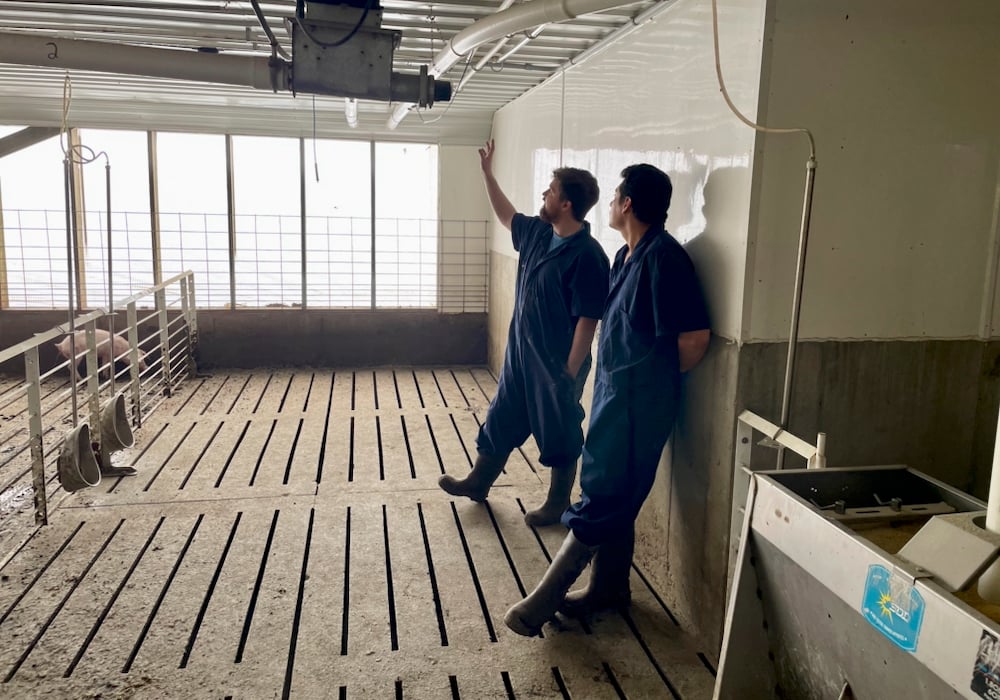Technology uses sensors to manage feed

For livestock producers, feed consumption and conversion are leading success indicators, but measuring this in real time can be challenging. Weighing animals regularly isn’t practical, and existing feed monitoring solutions don’t give an accurate picture of what is actually happening inside a barn.
Read Also


Beef imports from Britain jump 177 per cent
Glacier FarmMedia – Beef imports from the United Kingdom are up 177 per cent in the first four months of…
Why it matters: Feed is one of the biggest costs in raising livestock.
It became clear to Manitoba-based software developer Casey Forsyth that the industry – particularly hog production – was in need of a solution.
Forsyth invented FeedFlo, a patented IoT sensor technology and predictive software that helps hog farmers reduce their feed costs, increase operational efficiency and improve animal health by ensuring animals always have access to feed.
It sounds like a simple premise, he notes, but pipe blockages, system malfunctions and other problems can reduce the amount of feed going to pigs, impacting not just their growth but also their health.
“You can’t manage what you don’t measure. There are obvious opportunities for improvement, but you need a way to measure that in order to fix it,” he says.
With FeedFlo, a sensor is strapped to the top of a standard three-inch feeding pipe before the first feed drop and a laser looks inside to measure how high the feed is in the pipe.
At the same time, a metal detector measures how fast the auger is turning. In total, the system measures all feed moving past it, taking more than 40 different readings a second to ensure data accuracy.
Typical grow-finish barns in the U.S Midwest and Manitoba, where most FeedFlo systems are currently installed, have four bins and four feed lines set up in pairs, so one sensor pair can monitor about 600 pigs, he says.
Summaries of each production site and feed line are available on a digital dashboard that shows users data, status and alerts. A mobile app delivers notifications when a problem is detected; for example, an alert is sent if a pipe runs empty for five minutes, along with how much time it will take before feeders are empty.
“Pigs going 12 or 24 hours without feed has huge impact on their growth, and because stress activates dormant diseases, we see a huge opportunity by being able to monitor these issues in real time,” he says. “Animal health is our focus – there is value in getting pigs to market faster with lower mortality.”
Currently, installing the system in a typical Manitoba grow-finish barn will cost $3,400 with an annual subscription cost of $960 in subsequent years.
FeedFlo is targeted at three groups: growers managing an individual barn, managers who are responsible for multiple barns in an integrated system, and feed mills.
“We know for example, that pigs won’t eat when they are hot, but it can be hard for most producers to know how much their barns are affected by heat stress and whether their ventilation systems are good enough,” he says. “This lets you look at consumption during heat waves, how much pigs eat at night versus during the day and how much longer it can take to get to market.”
FeedFlo offers a five-day forecast of feed consumption, so users know when they need to schedule their next feed delivery. The system can also automatically re-order feed, streamlining work for both producers and feed suppliers.
The company moved from research and development into commercial operations last year, and although most of its early customers are in Iowa and South Dakota, they’re also now starting to get traction in Western Canada, focusing on the grow-finish phase of the production cycle.
FeedFlow was launched three years ago and the Winnipeg-based company, led by Forsyth as CEO and Ethan Chochinov as COO, now has five full-time staff. Next steps include expanding the product line to cover different feeding equipment in different livestock sectors.
“It’s about keeping an open ear to know what data producers want to make improvements on the farm,” he says. “We want to help people make better decisions.”
Source: Farmtario.com

